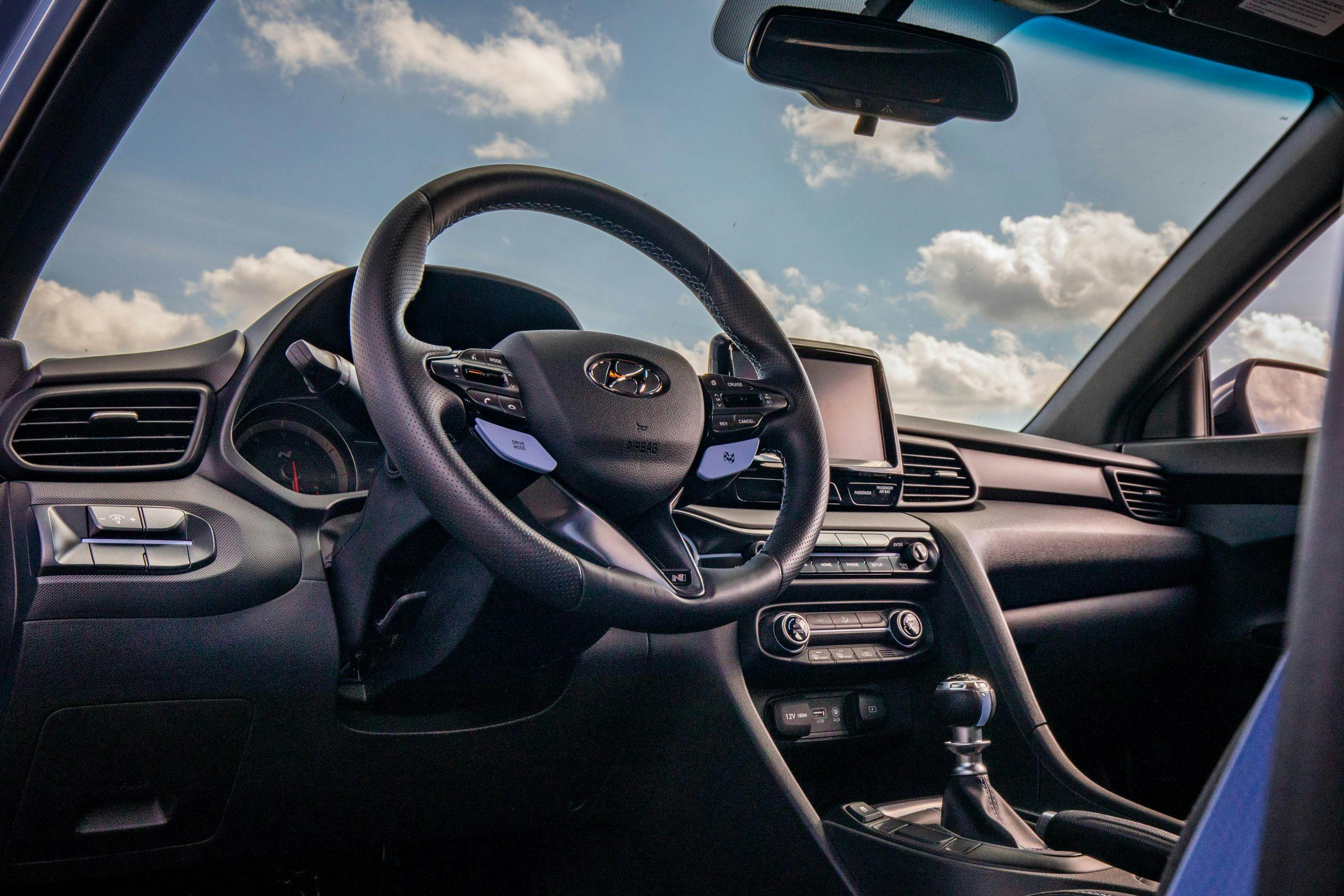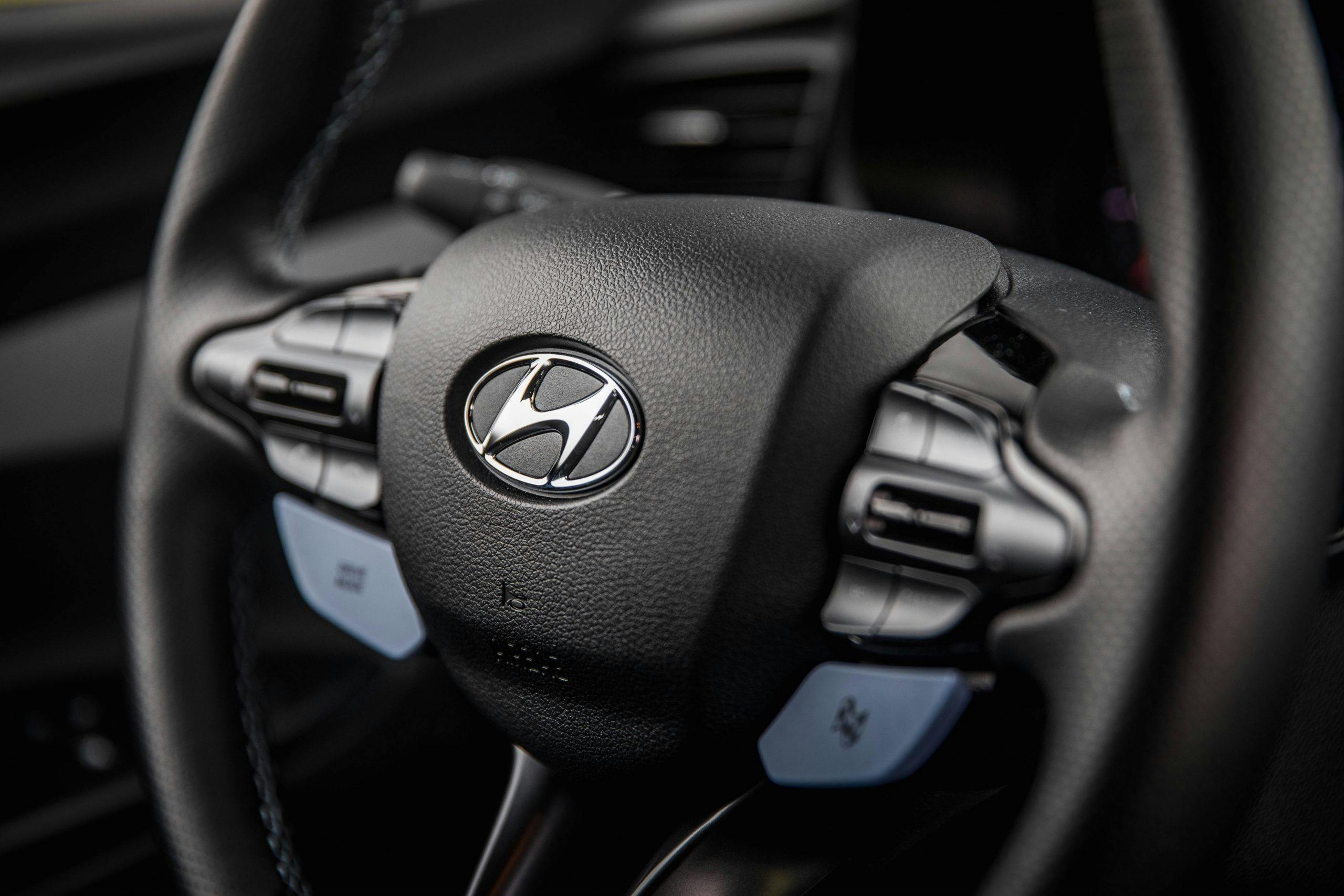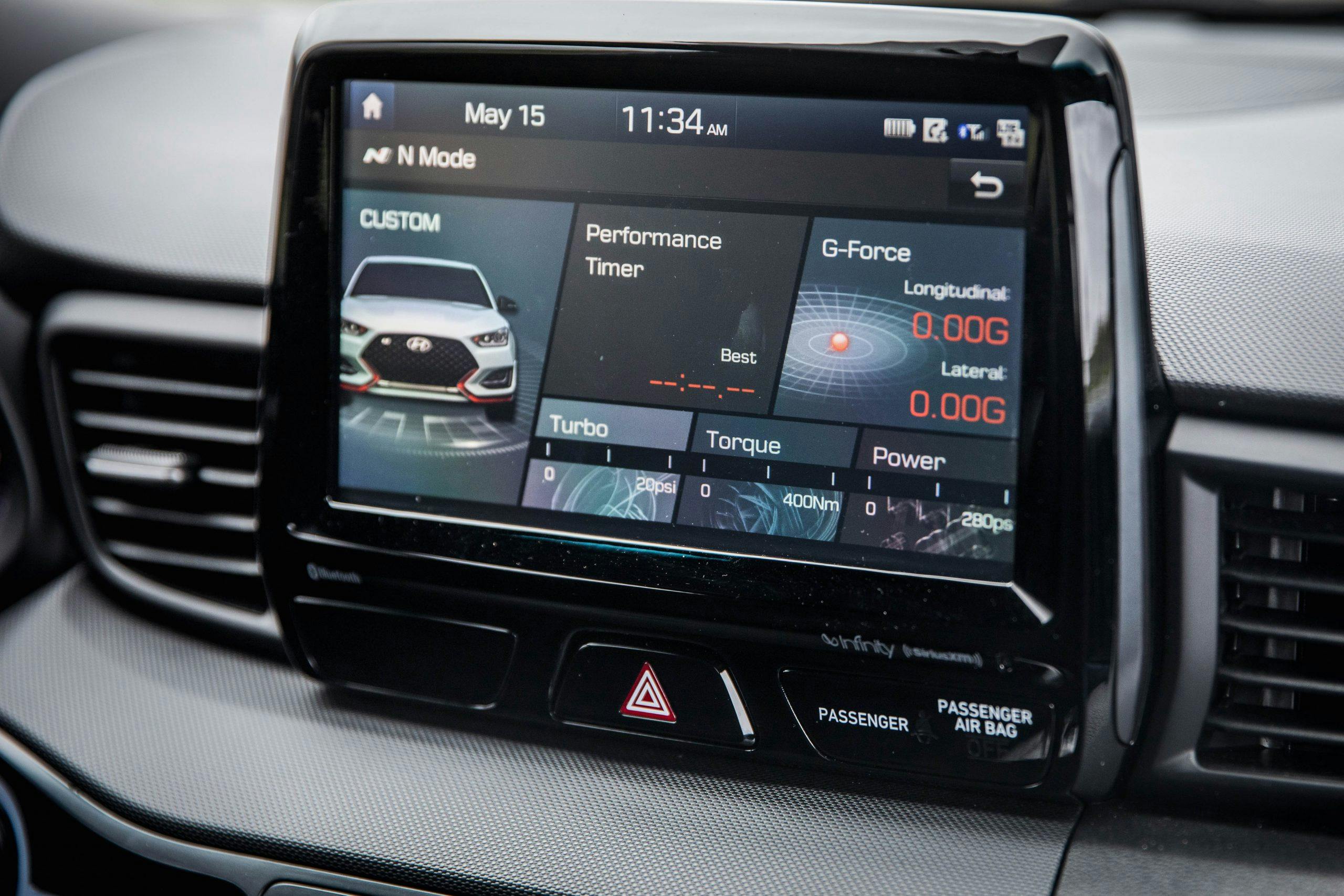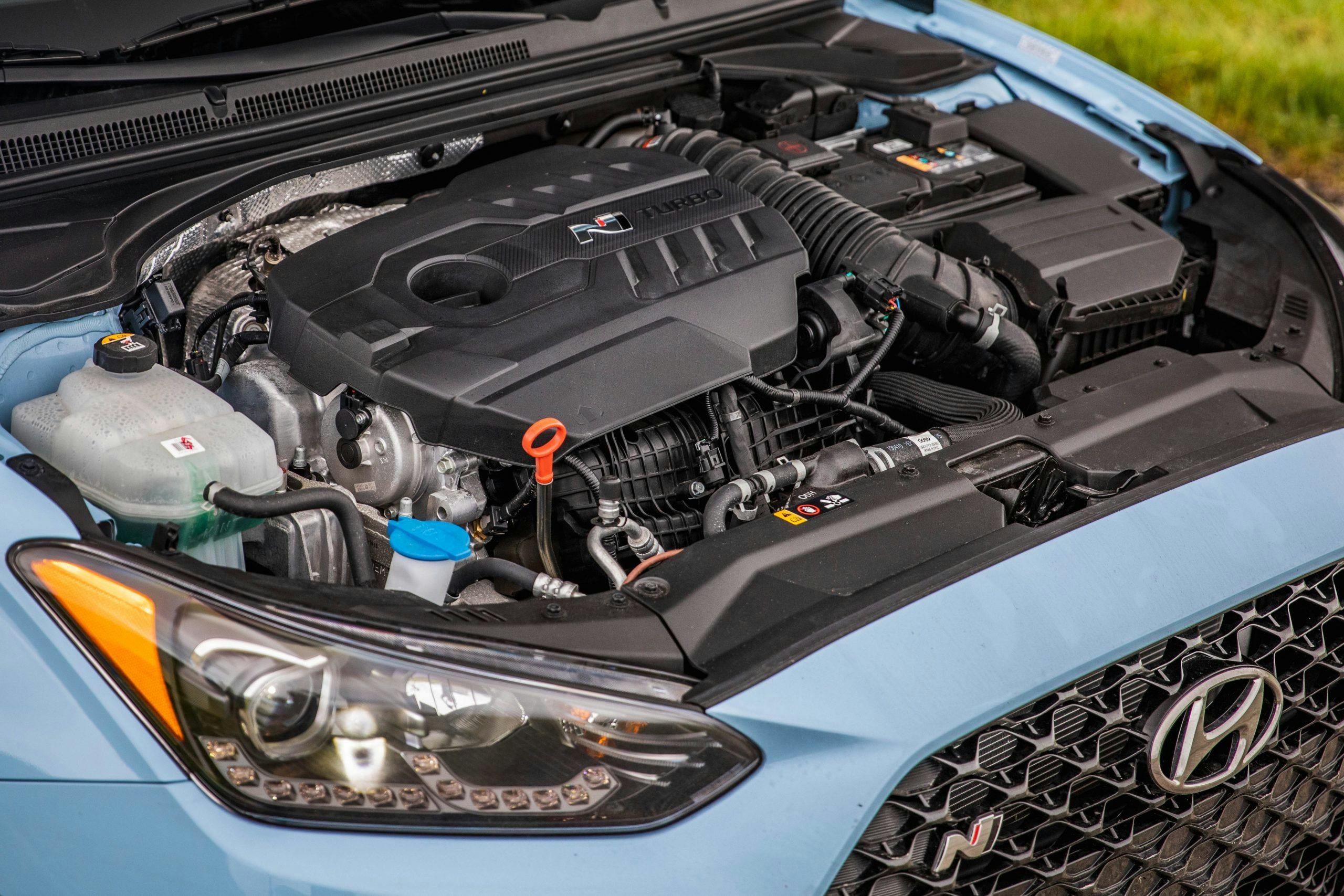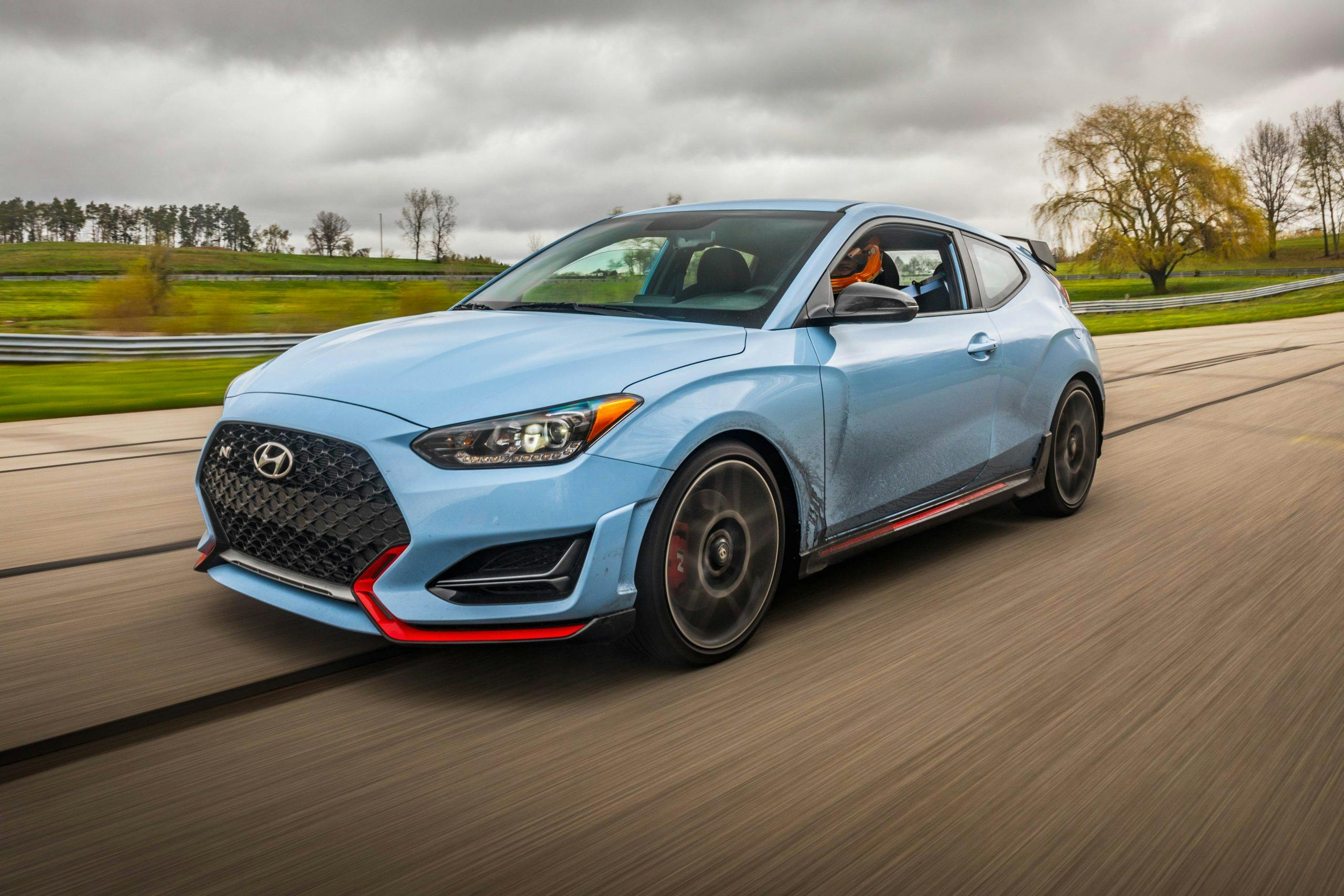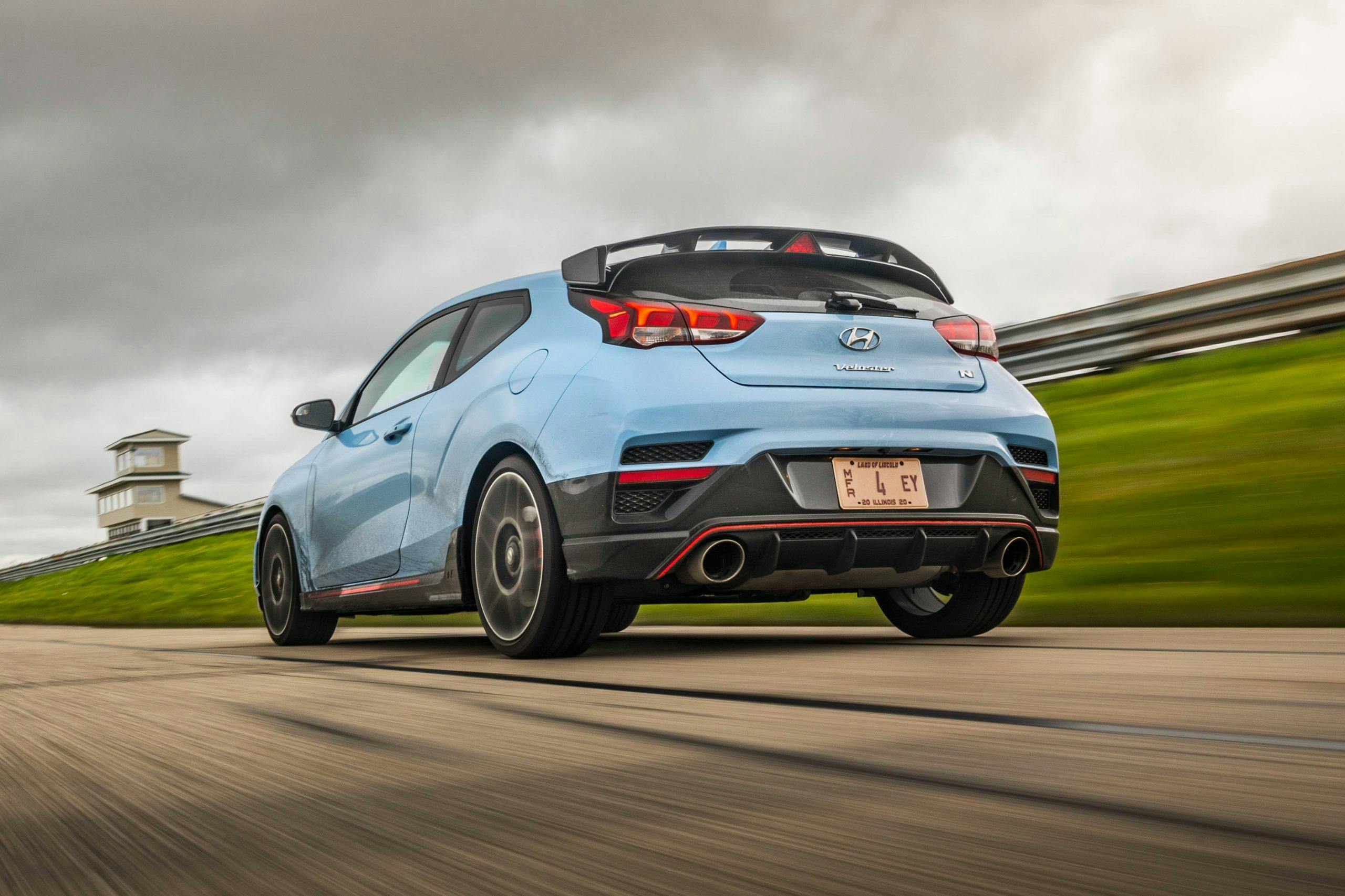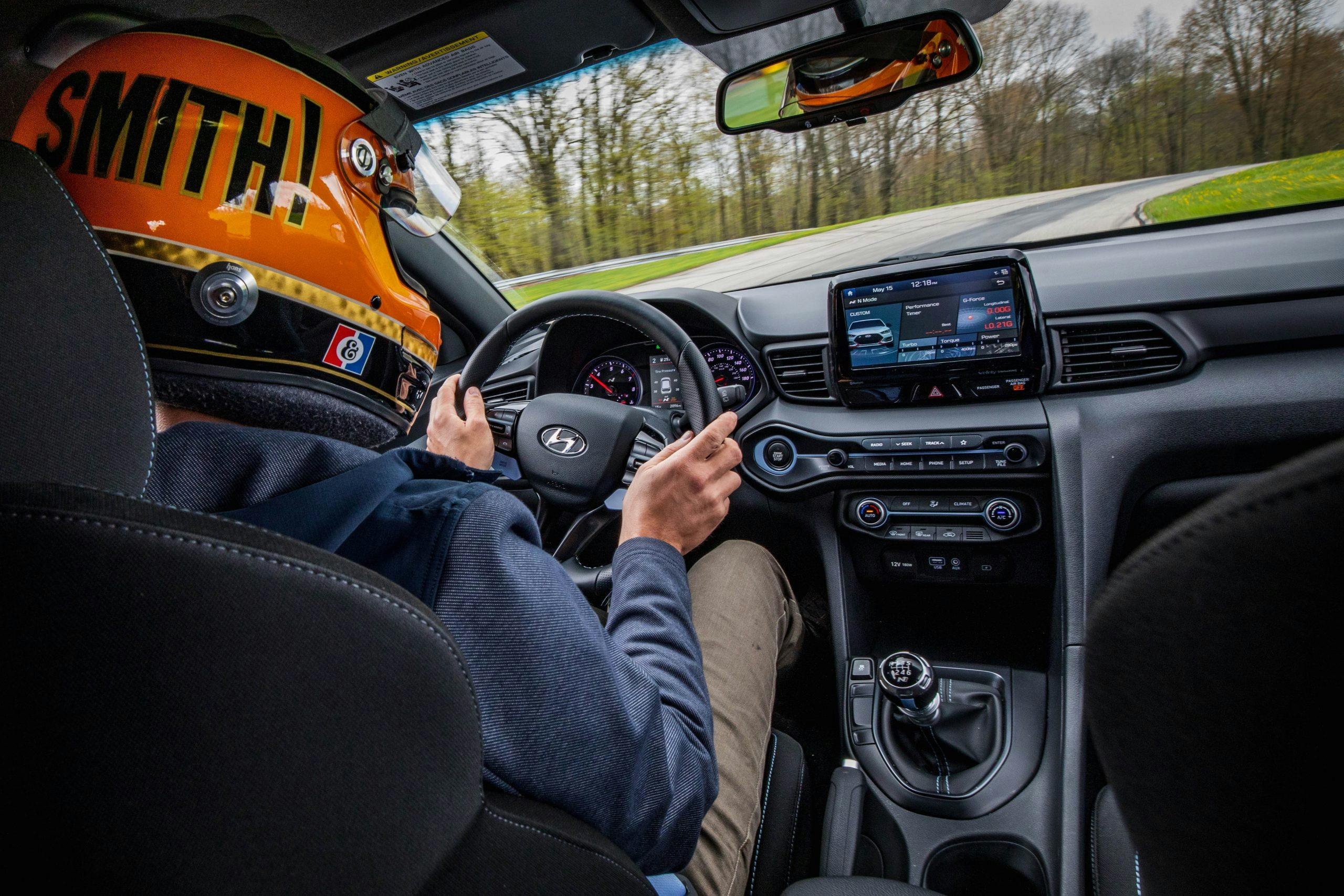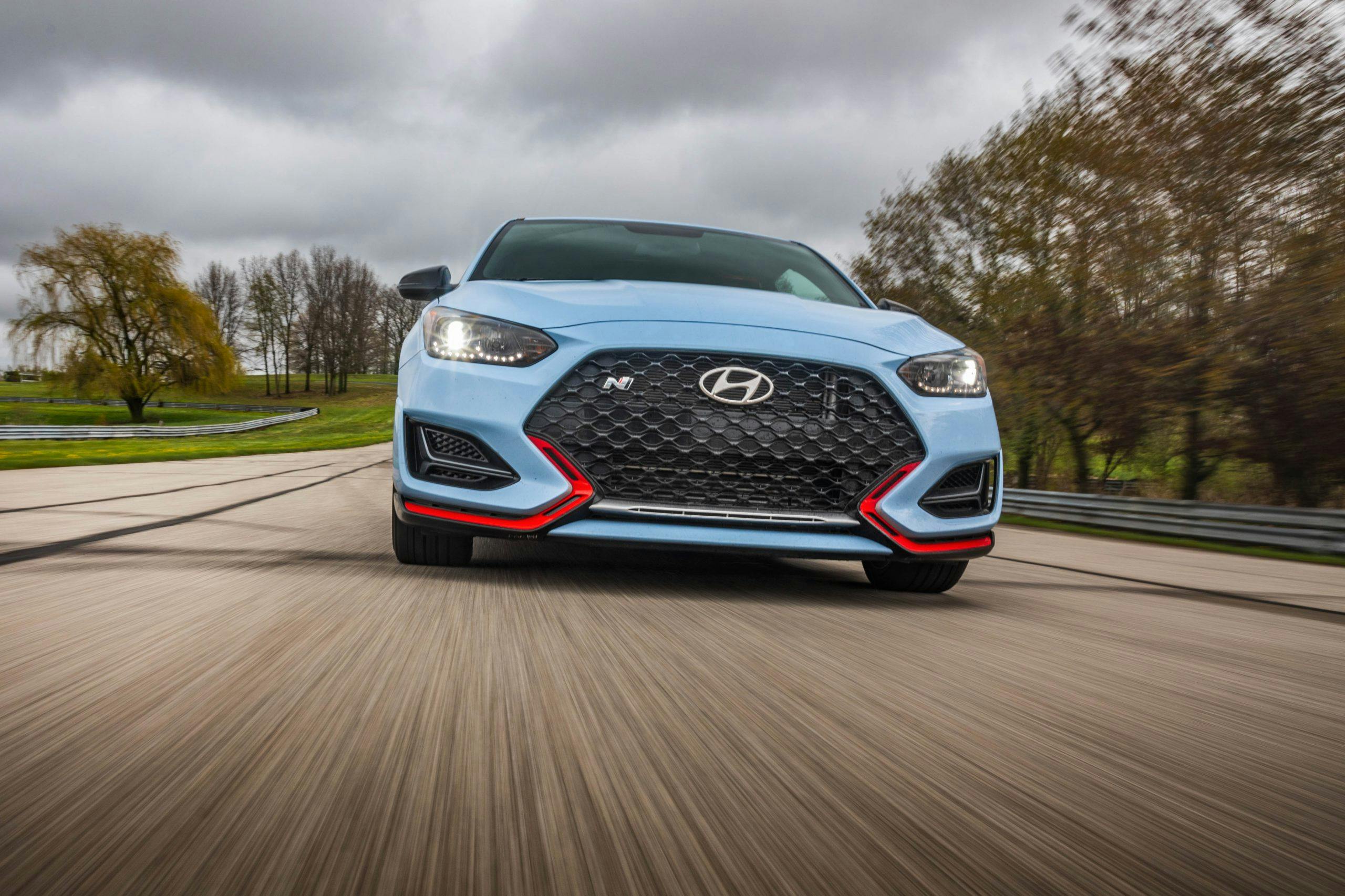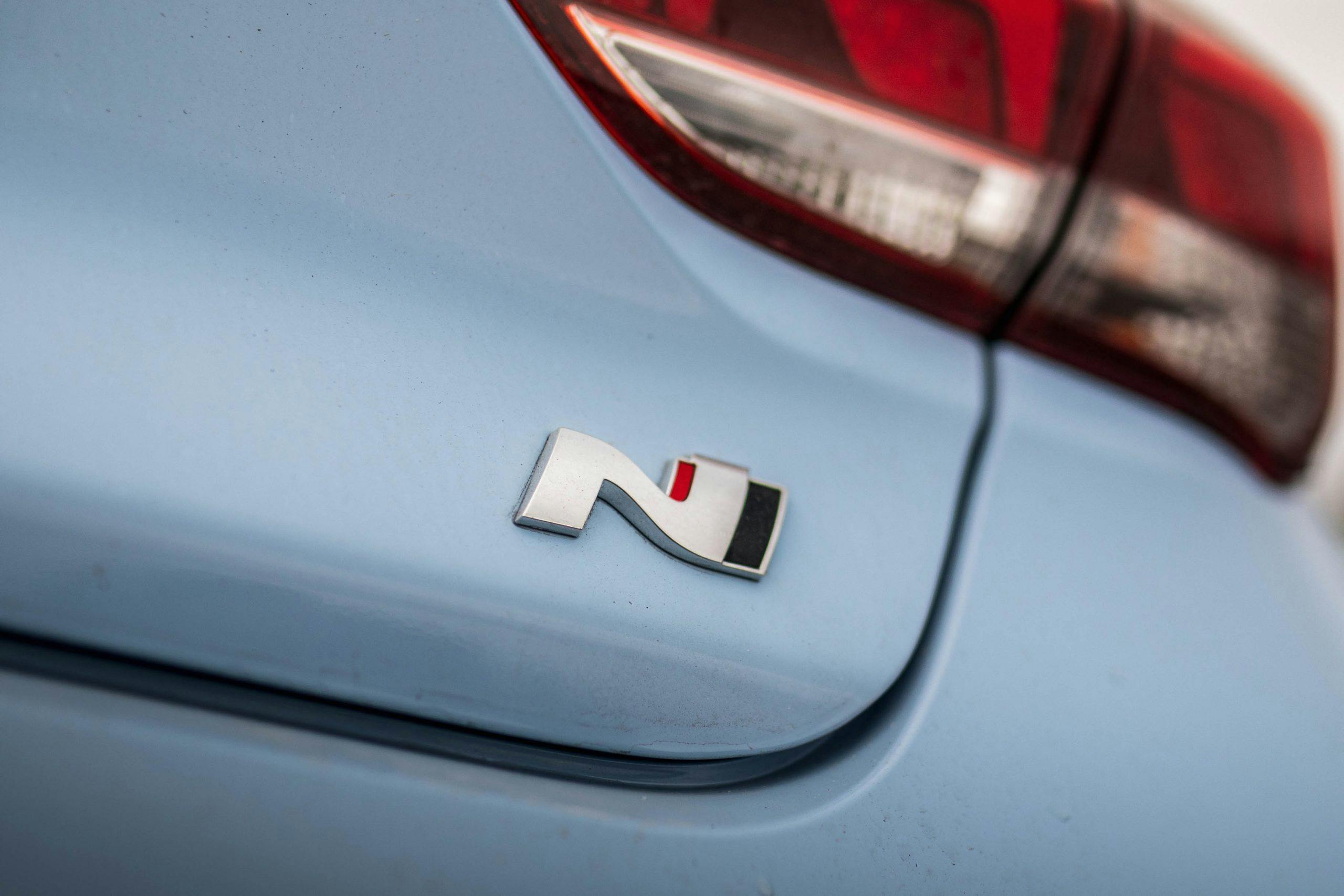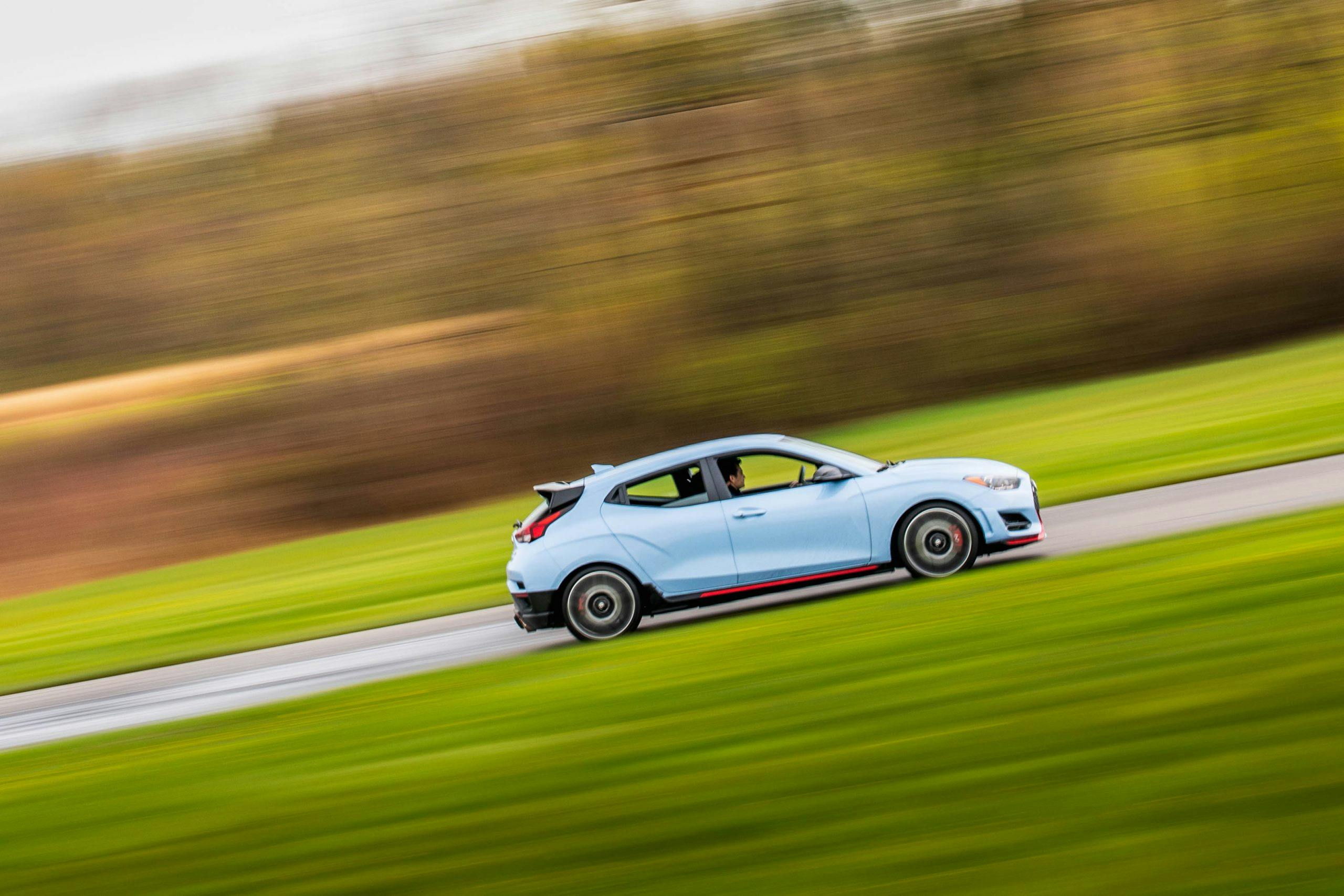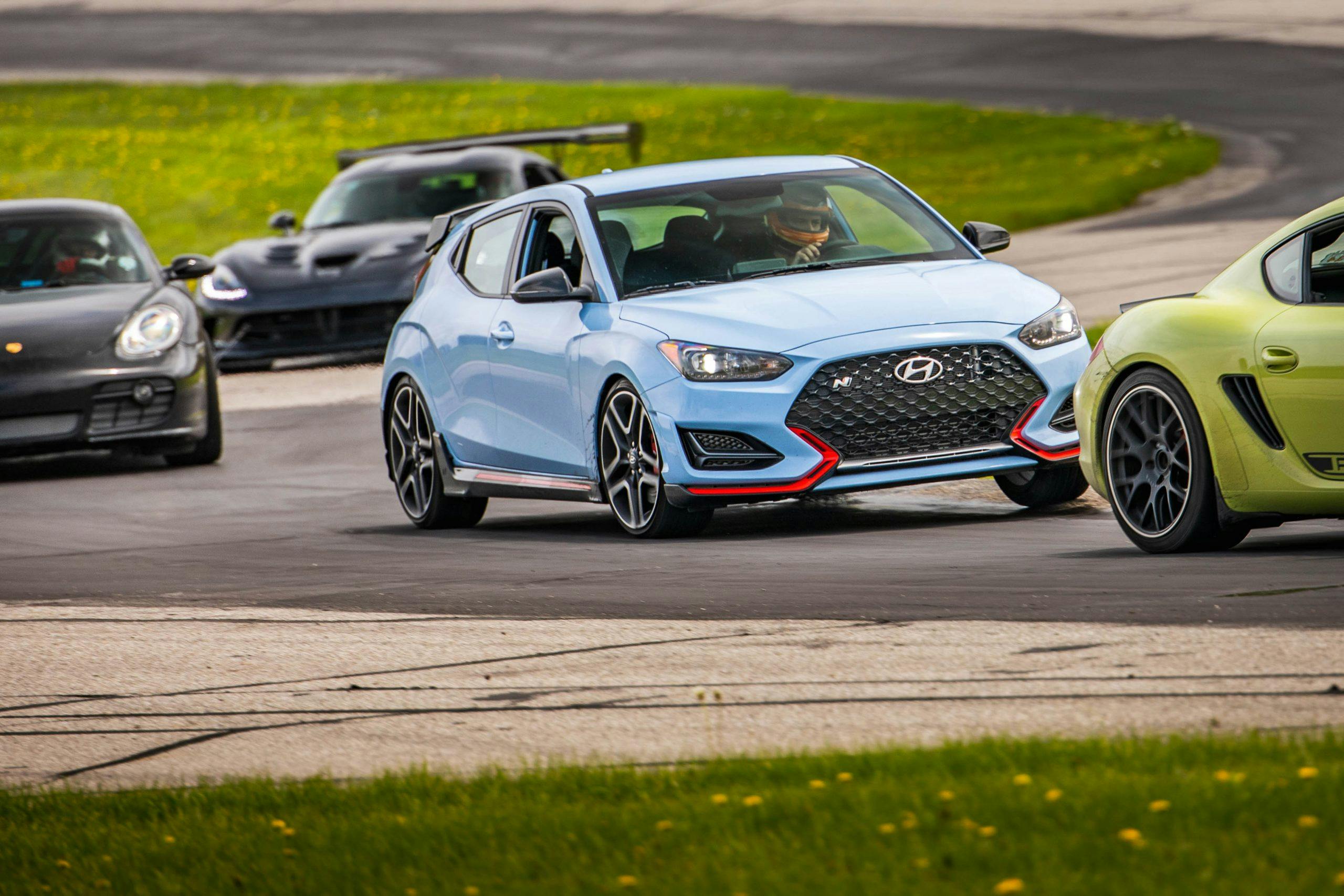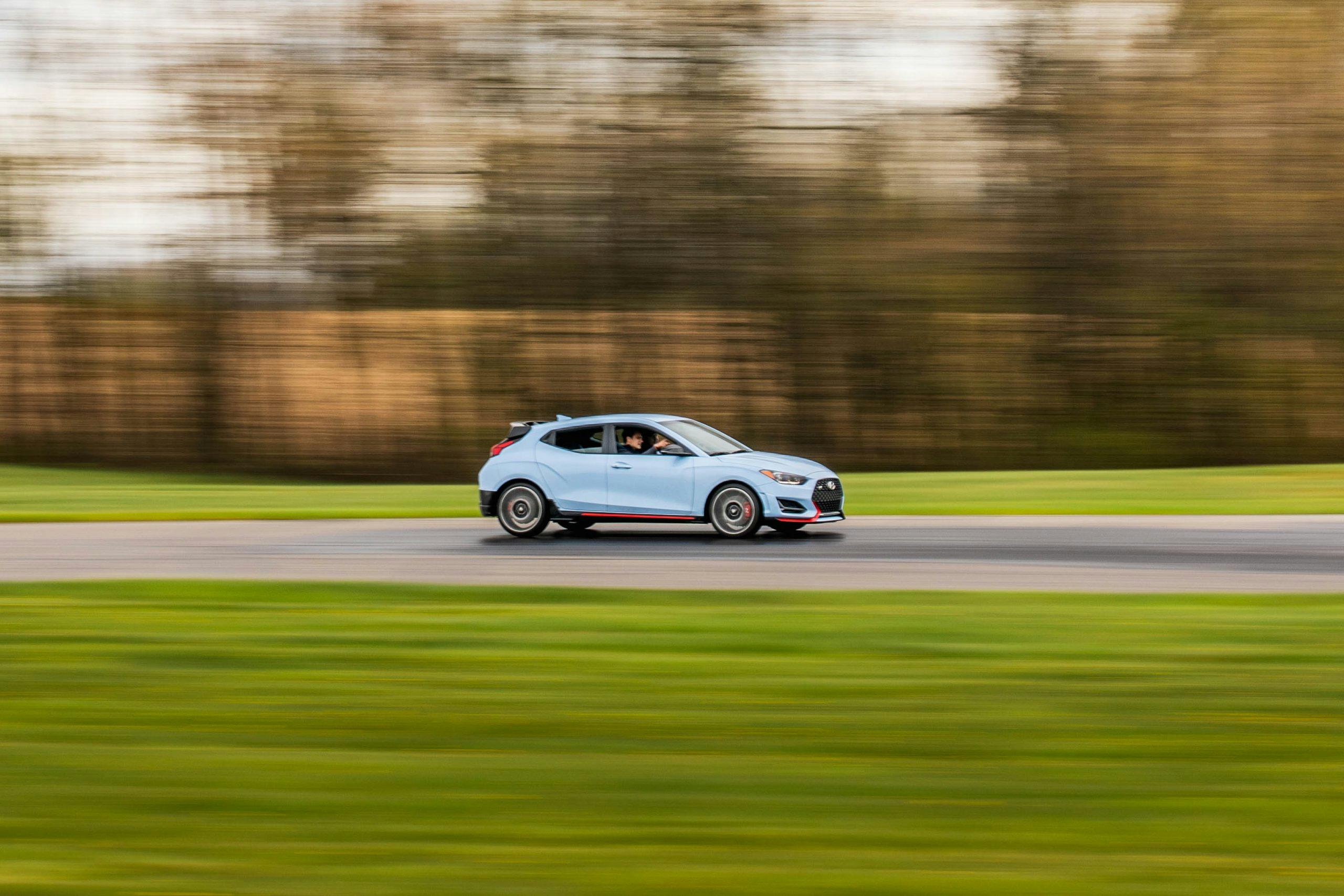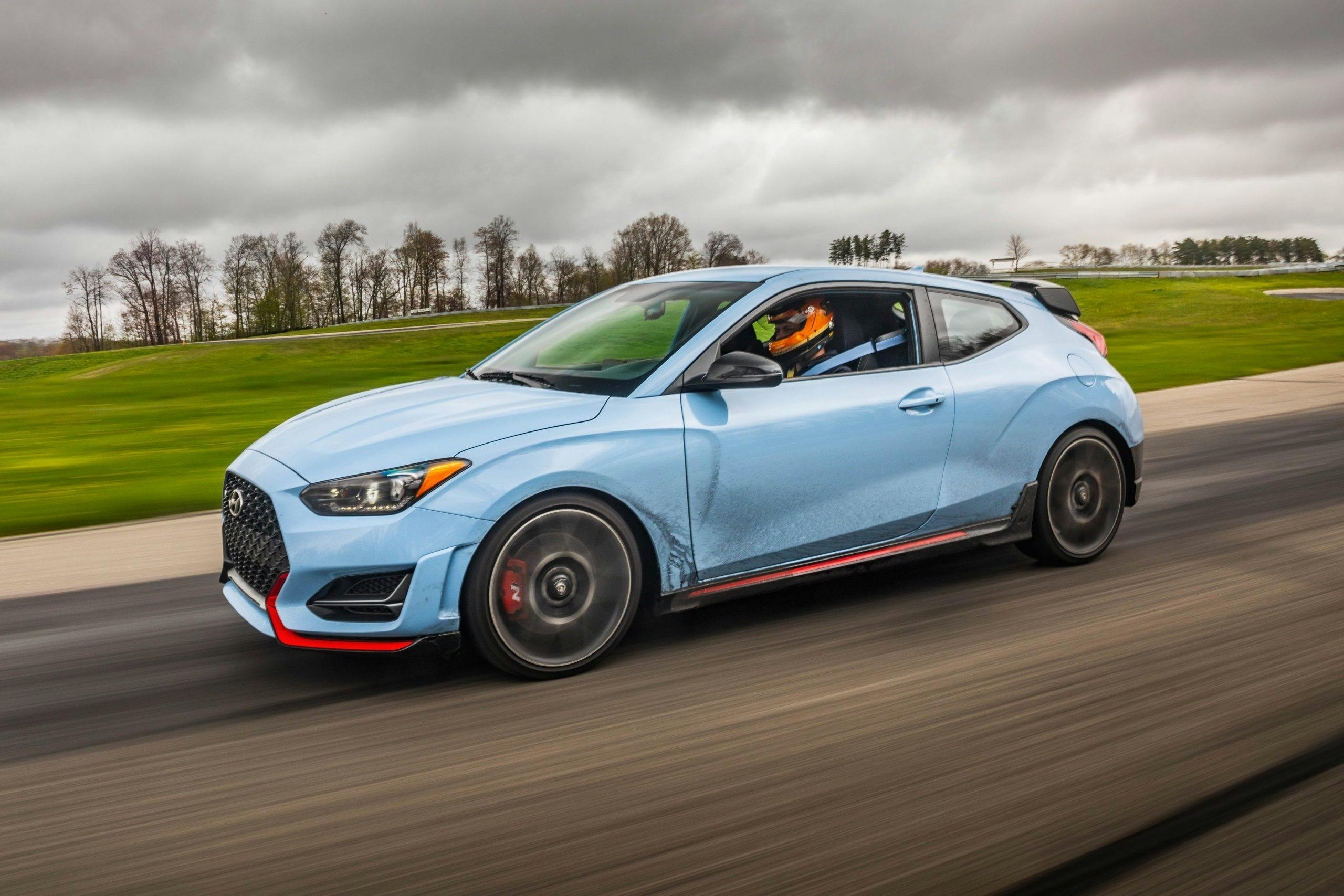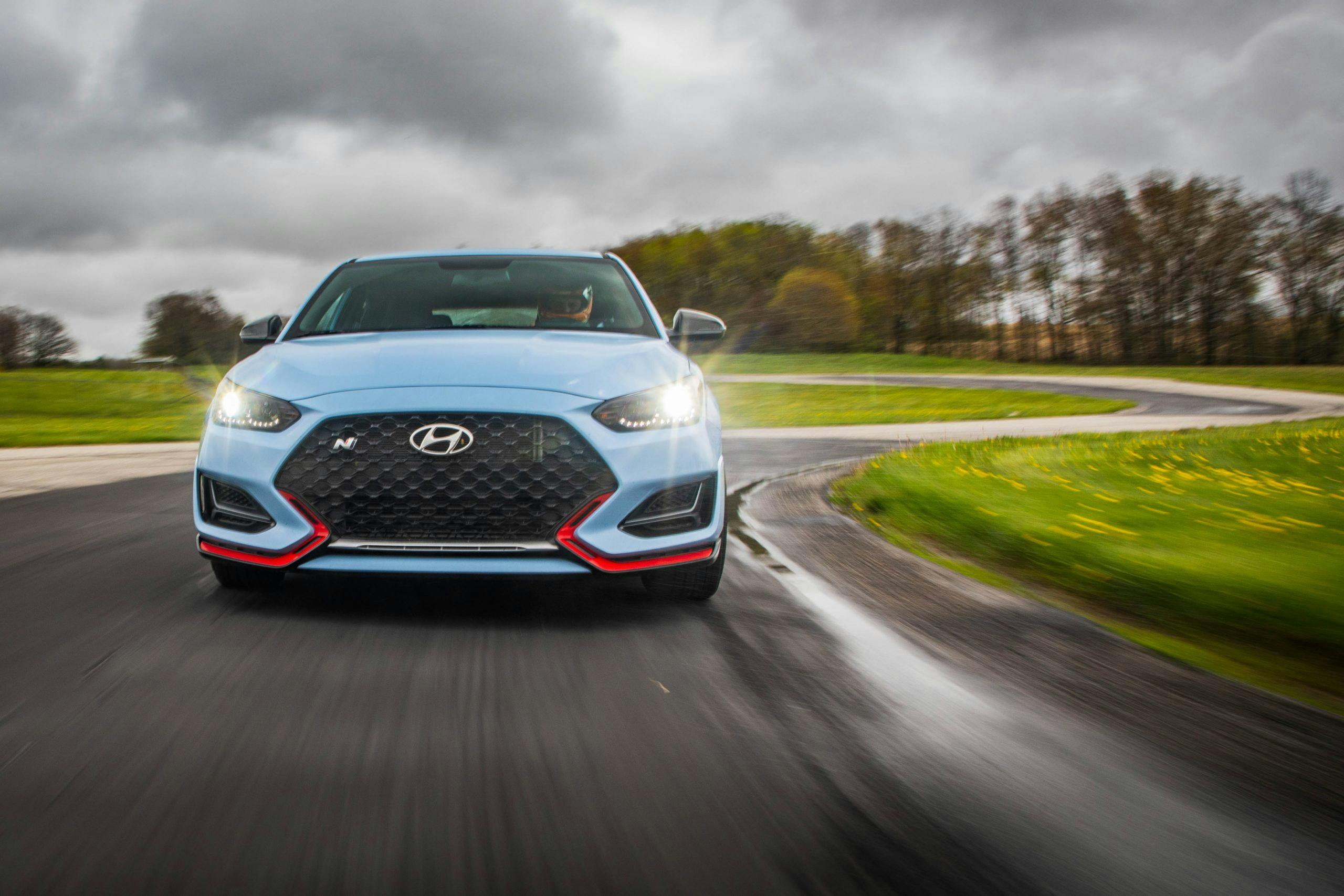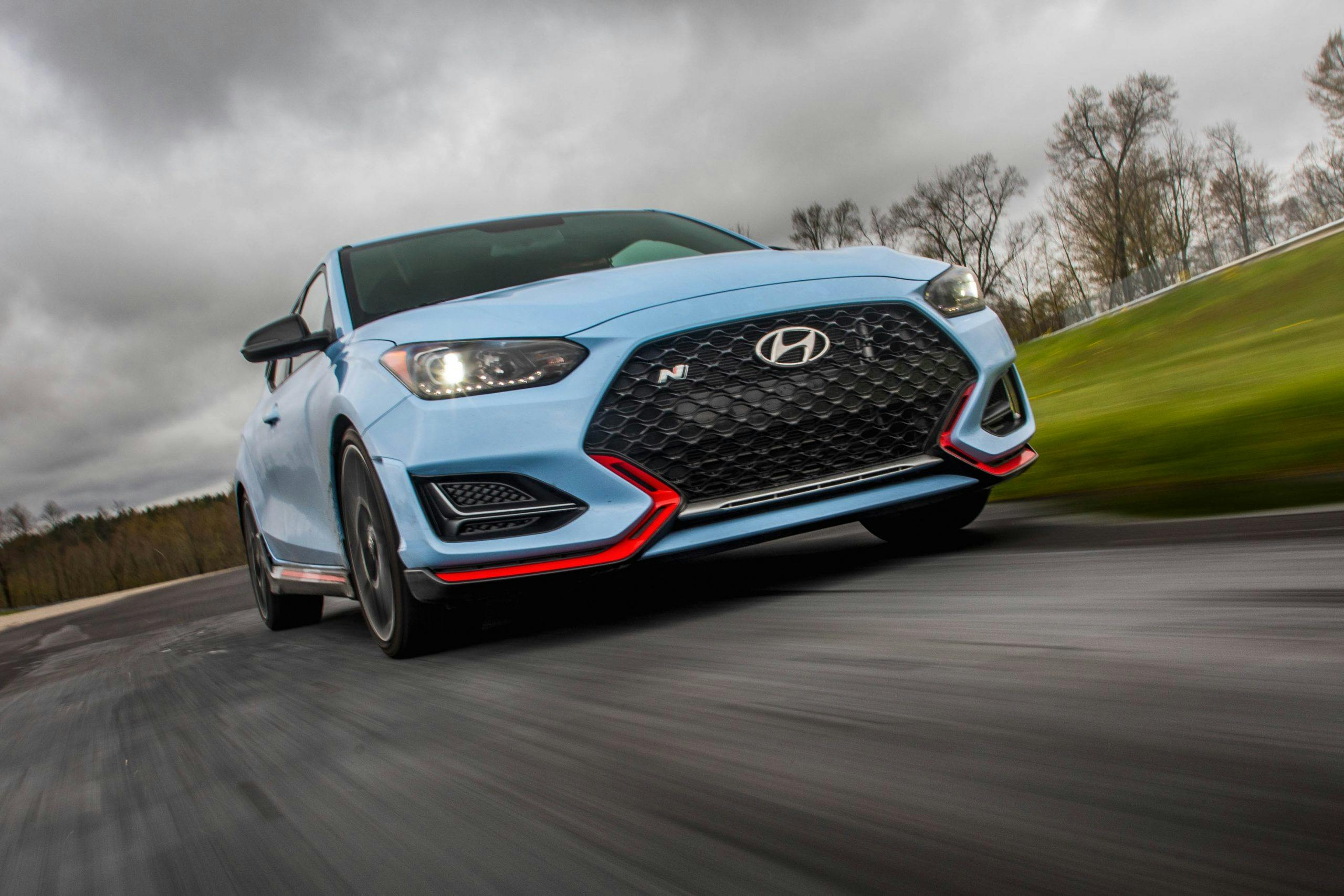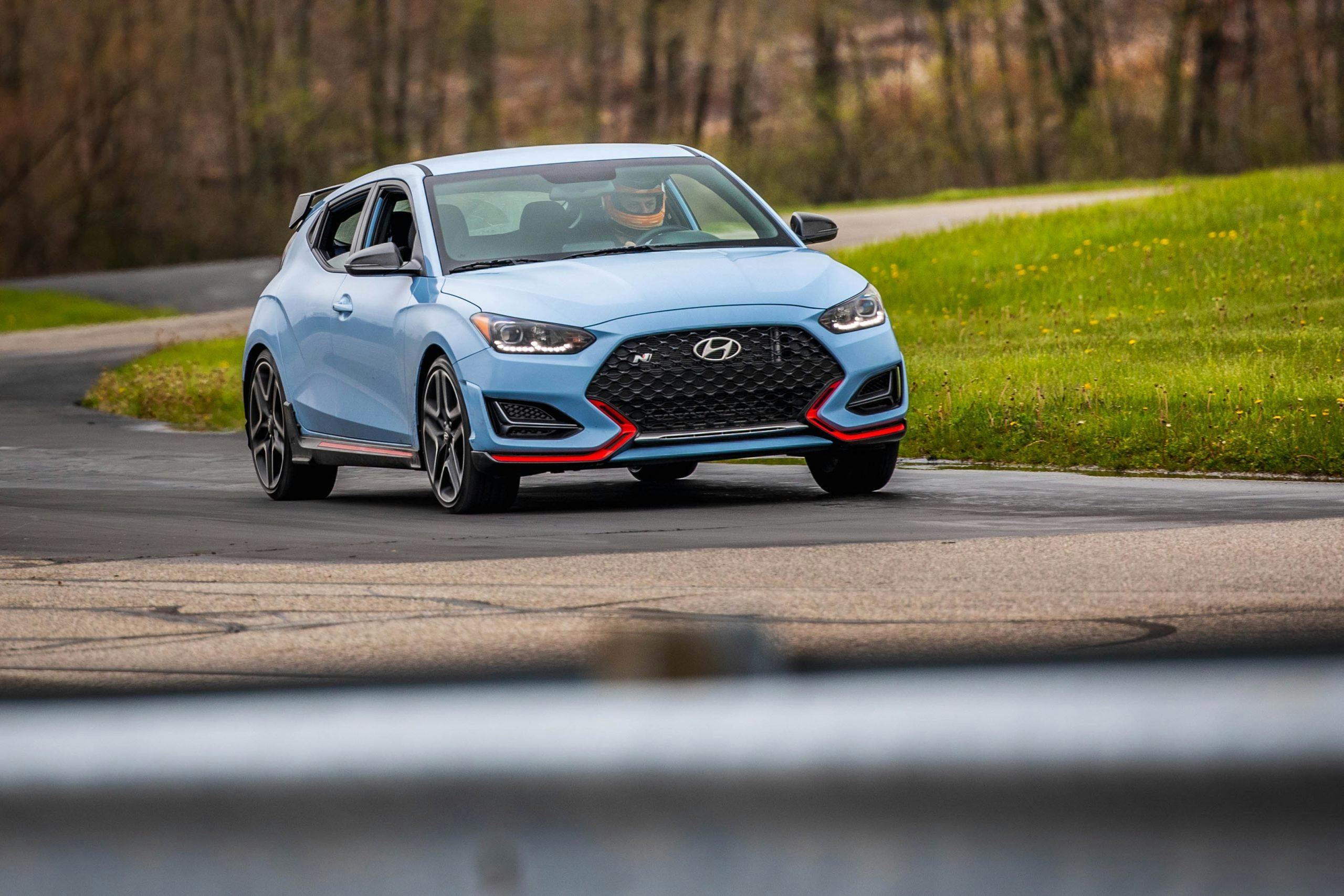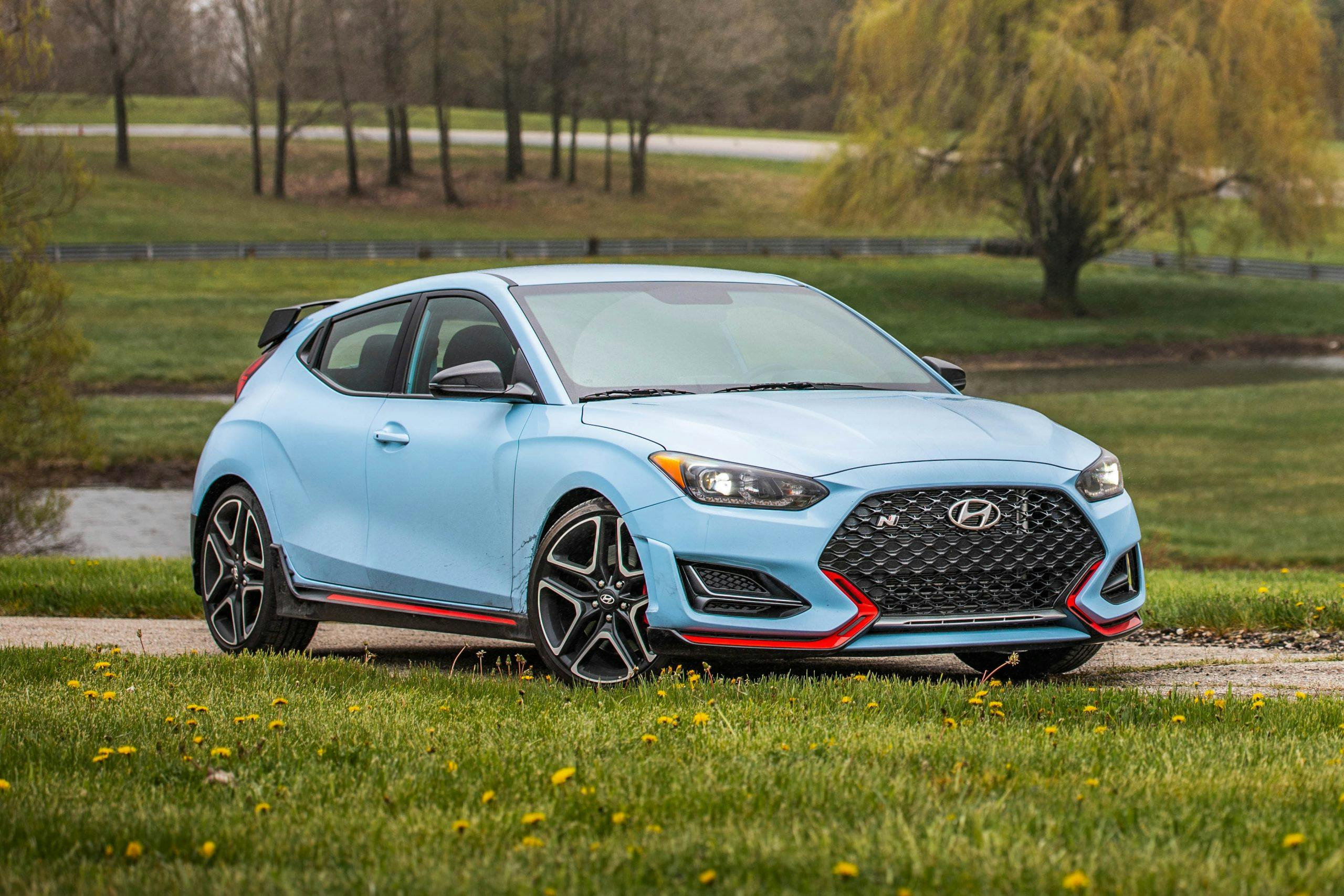Review: 2020 Hyundai Veloster N
Car names rarely say much. Veloster, for example, is a portmanteau of the words “velocity” and “roadster.” There is velocity in the $28,000 Veloster N, to a point. The Hyundai is a performance-bent hatchback, like the Volkswagen GTI or Ford Focus ST, but you won’t buy one to go hunting Corvettes. Similarly, there is zero roadster in the thing, at least by the traditional definition.
The Hyundai name, however, means something.
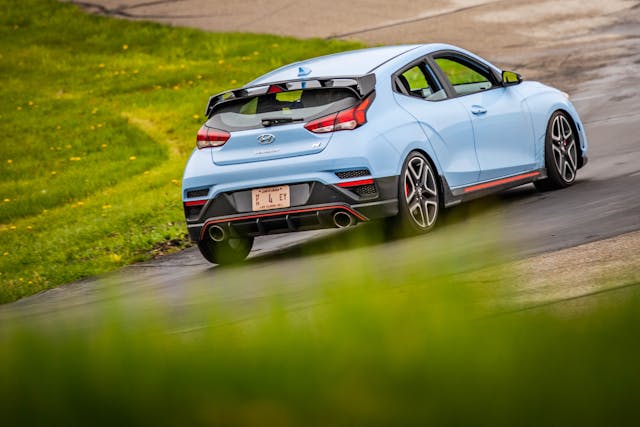
Hyundai has spent more than a decade attempting to lift its image in America. Surveys have consistently shown that new-car buyers care less about model names than they do about the badge on a hood, and the Hyundai badge has long carried such stigma here—affordable compromise, rental cars, low cachet—that you might wonder if Veloster owners even notice the name on the trunk. Watch the market for a bit and talk to dealers, you get the feeling Hyundai could rename many of its cars just about anything, no matter how ridiculous—Vomit-Bringer 4000! Toejam GLX!—and sales wouldn’t budge up or down.
Not that there is much room to fall, in some cases. Hyundai sold just over 2200 Veloster Ns in America in 2019. If that number means nothing to you, consider that Volkswagen sold more than seven times as many GTIs in the same period. The VW is in its dotage, sales falling, about to be redesigned. The Veloster N is now two years old, similar to the GTI in footprint and output and price and in the prime of its life, and nobody save car journalists seems to give a rip.
Shame, that. Because while the GTI makes most new cars seem heartless and cold, the Hyundai makes the Volkswagen look like a dead fish.
N is to Hyundai as M is to BMW or AMG is to Mercedes. Hyundai says the letter stands for Namyang, the Korean home of the marque’s R&D center. The company also says the N stands for Nürburgring, the 12.9-mile German circuit on which manufacturers develop and torture-test new cars.
The Veloster N is the newborn performance division’s first product for America. The car is a faster and more track-oriented version of the ordinary Veloster. Which is a thoroughly unspectacular, $19,720 device powered by a 147-hp, 2.0-liter four driving the front wheels. Call it a decent alternative to a Honda Civic coupe of similar spec, albeit with a smaller back seat and three doors instead of two. (The Veloster offers just one dedicated door for its rear seats, on the right side. Charming quirk, so long as you aren’t regularly folding two humans or child seats into the back.)
N trim wakes the thing up. The turbocharged, direct-injected, 2.0-liter four under the hood produces 250 hp at 6000 rpm and 260 lb-ft of torque, and it’s married to a host of changes that noticeably impact handling and personality. A six-speed manual gearbox is currently the only available transmission. (Hyundai says a twin-clutch eight-speed is coming for 2021.) Chassis rigidity has been increased through extra welds and structural braces. Suspension tuning is generally stiffer, especially in the rear, with adaptive dampers and a few small but beneficial geometry changes. The exterior wears new bumper covers, cartoonish orange accents, new sill covers with aerodynamic “gates” at the rear, a roof spoiler, a rear diffuser, and dual exhausts. Eighteen-inch alloys and ultra-high-performance Michelin Pilot Sport summer tires are standard, with 19-inchers and Pirelli P-Zeros coming on the optional $2100 Performance package.

That pack is a worthwhile spend, as it brings another 25 horses, larger brakes, an active exhaust spitting pops and crackles, and an electronically controlled limited-slip differential. Our test car, a Performance-pack-equipped 2020 model, was a bright-blue eyeball scorcher, but even in quieter colors, the styling is about as low-key as a punch in the face.
Visuals like this may be your taste. If they are not, you will huck the car into a corner and immediately stop thinking about looks, because the thing just works. Often astonishingly so, and without anything like a vice in handling. There is steering feel here, mostly transparent and good. That’s rare nowadays. Its weight changes with road surface and loading, growing lighter or more numb when you make clever use of the remarkably effective differential. (Or when you’re an ape on the gas and light the front tires.) There is also a relatively comfortable ride and remarkable grip on anything short of moonscape pavement—uncommon in cars with any claim to ‘Ring development. The interior is quiet on the highway. The brakes are consistent and linear, the pedal about right for heel-and-toeing. You don’t want for much there, though the pedal can go a bit long in track use.
Hot hatchbacks felt like this 20 years ago, when the world believed they should be light and feisty. The whole package prompts comparisons to the GTI, one of the best hatches in the business—but the GTI as it once was, when that car was smaller and more cheery, a petite sort of thing that liked gobs of trailed brake and a few buckets of sin sloshing around your midbrain. And it gets you thinking on the past in other ways. The Veloster N sits in the pantheon of great-handling ballsy front-drivers, up there with the Ford Fiesta ST, the Acura Integra Type R, and that beat-up old crapcan import that you drove at 16, the one that still seems like one of the best cars in the world even though it almost certainly wasn’t, largely because you hadn’t driven much at age 16 and that’s just how memory works.
Pay attention in the Veloster, and the result is immediate attachment. The car just seems to rotate around a point a few inches aft of your spine, begging to be driven harder.
From… Hyundai, of all places. Who knew?
Disclosure: I am somewhat biased. I own a 2019 GTI, bought to haul my kids. The car is possibly as good as it gets in a front-drive family device, but the key word there is “family.” If the Veloster’s back seat were even slightly larger and more accessible for kids, I’d drop the VW like a bad habit. The first time I threw the Hyundai down a back road, I kept picturing the Volkswagen as a pile of that pink beef slurry that McDonald’s used to put in chicken nuggets. The two cars think they’re playing the same game, but the VW doesn’t trust you or its rear tires as much. It kneecaps the Hyundai only through interior space and the emotional glee of its power delivery.
That last bit is important. The Veloster’s 2.0-liter is a valiant effort, but it ultimately falls a bit short. The engine is a reworked version of the 2.0-liter from the discontinued Hyundai Sonata T, equipped here with sodium-filled exhaust valves, more efficient turbocharger plumbing, and increased boost. Compression ratio has been dropped to 9.5:1, down from the Sonata’s high 13:1, to work with the added boost, while the turbo’s intercooler has been physically isolated from the car’s coolant radiator and A/C condenser, the better to shed heat. Peak torque is delivered from 1400 to 4000 rpm. There’s relatively little lag and a crisp throttle, and 60 mph arrives in 5.2 seconds.
Those are promising numbers, but the driveline never feels special or even particularly awake. The engine seems happiest in the middle of the tach and sounds at high rpm as if working under nonterminal but insurmountable strain, like a vacuum cleaner trying to swallow a cat. The gearbox pairs relatively close ratios to a ropey linkage and shift cables that feel miles long. The last ten years of new cars have given the world a zillion turbo-fours like this. A lot of them make snarfly noises on throttle, and many are smoother and more engaging.
Still, the engine’s transgressions wouldn’t stand out if everything else here weren’t giggles on the hoof and cheap as chips. Even just knocking around town, you get the feeling that some engineer somewhere wanted you to tell your great-grandkids about the time you drove the purple whee out of a snot-nosed Hyundai. History has given us more than a few great hatchbacks, and most didn’t handle half as well or with as much sense of purpose.
Most were also born years ago. If you want a track-ready front-drive hatch with this power and focus, brand-new and for less than $30,000, options are slim. A GTI is smarter for daily use but less entertaining in feedback and balance. A Civic Si is pleasant around town but more of a sleeping pill at speed. The 306-hp Civic Type R is often mentioned in the same breath as the Hyundai, as the two cars play a version of the same song; the Honda will likely bring better resale down the road, and it feels more composed in most conditions. The Japanese-via-Britain car is also nearly $10,000 more to start, and it’s the kind of device that doesn’t come alive until the eleventh tenth. The Hyundai is equally awake at 20 mph and a buck-twenty.
Machines like this once built brands. Some unspectacular manufacturer, famous for nothing in particular, would spit out a car of this caliber almost by accident, waking the next day to a world wanting more. Loyalists would raise hands, clubs would form, families would build lifelong attachments.
We now see far fewer sparks of joy in the market. Which makes them more special just for existing, now. If you’re at all smart, with this one, the badge on the hood won’t matter. And maybe, just maybe, more folks will begin to feel as we do, and a few engineers or designers will be encouraged and keep going, and we’ll get more Hyundais like this, and the Germans and the Japanese will take the hint and up their games to match. The world will shift a little on its axis, we’ll all be a little happier behind the wheel, and a certain name will matter—even if only to a diehard few—ever so slightly more than it once did.
2020 Hyundai Veloster N Performance Pack: $28,330 ($30,430 as tested)
POWERTRAIN: 2.0-liter turbo I-4, 275 hp @ 6000 rpm, 260 lb-ft @ 1400–4000 rpm
WEIGHT: 3077 lb
0–60 MPH: 5.2 seconds (Performance package)
EPA CITY/HWY: 22/28 mpg
Pros: The steering! The balance! The spirit of the thing!
Cons: The rear seat! The engine! The slightly pitying, albeit ignorant, look on the face of your GTI-owning neighbor!
Summary: A real performance car, and a genuinely focused enthusiast hatchback, in an era where such things are all but extinct, sold with a great warranty.

